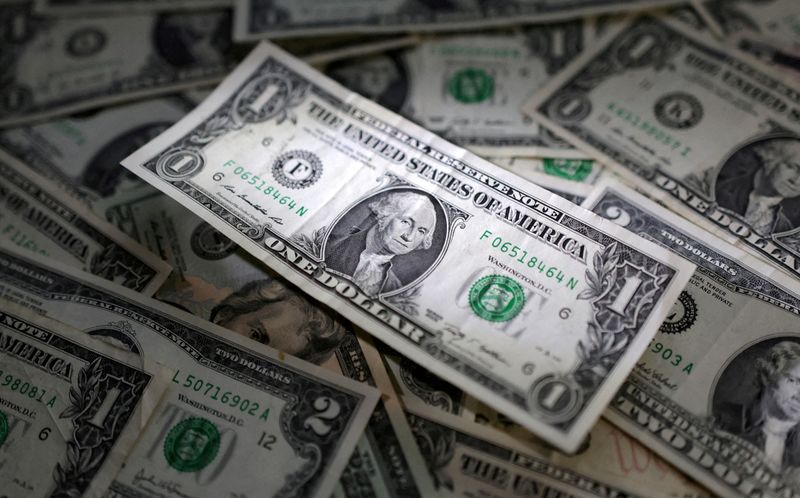
© Reuters. FILE PHOTO: U.S. dollar banknotes are seen in this illustration taken March 10, 2023. REUTERS/Dado Ruvic/Illustration/File Photo
A look at the day ahead in European and global markets from Rae Wee
‘s 1% fall for the week thus far is set to be its steepest in nearly three months, and tonight’s U.S. jobs data is the next test for the greenback.
It would take a very, very strong number to change the outlook for U.S. rates, given how Federal Reserve Chair Jerome Powell has already opened the door to cutting rates even if unemployment stays low, as long as inflation continues to slow.
Forecasts are for nonfarm payrolls to have increased by 200,000 in February, down from January’s blowout 353,000 gain.
“We believe fewer end-of-year layoffs produced (the) temporary spike, and with the seasonal layoff period now behind us, we assume a return towards a more normal pace of job gains,” analysts at Goldman Sachs (NYSE:) said.
So for now, the first of the Fed’s rate cut seems to be within sight – unless next week’s U.S. inflation report proves otherwise.
The dollar has thus far been the clearest reflection of the easing expectations, with its recent move lower and buoyant risk sentiment hoisting the back above the $0.6600 level.
Record peaks for gold and bitcoin this week also show the dollar’s vulnerability.
The euro, too, is at a two-month high and eyeing its best week against the dollar in months, even as the European Central Bank (ECB) on Thursday laid the ground for a rate cut in June and lowered its inflation forecast.
TURNING THE PAGE
While most of the world focuses on the global easing cycle, over in Japan, it seems the time is ripe for a rate hike.
Bank of Japan (BOJ) officials have begun ramping up their hawkish rhetoric and shown increasing confidence that the Japanese economy was moving towards the BOJ’s 2% inflation target, just ahead of the central bank’s March 18-19 policy meeting.
Wage talks from large Japanese companies also look set to yield hefty pay hikes, paving the way for the BOJ to exit negative interest rates, which some say could happen this month.
That’s helped the yen – which has crumbled under a towering dollar for the most part of the past two years – jump to a one-month high against the greenback on Friday.
Japan’s banking stocks index was similarly eyeing a weekly rise of more than 6%, its strongest performance since September, when there was a lot of speculation of an imminent policy shift heading into the BOJ meeting that month.
“Our BOJ call of an early NIRP (negative interest rate policy) removal in March and an additional rate hike in 2024 used to be an out-of-consensus call, but more market participants and economists may start to price in the scenario ahead of the March (monetary policy meeting),” said economists at Morgan Stanley (NYSE:) MUFG Securities.
Key developments that could influence markets on Friday:
– Germany industrial output (January)
– Germany industrial production (January)
– Euro zone revised Q4 GDP
– U.S. nonfarm payrolls (February)











